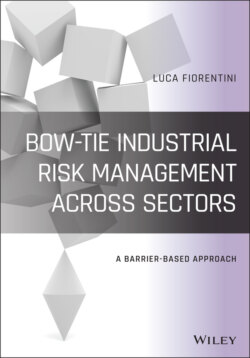Читать книгу Bow-Tie Industrial Risk Management Across Sectors - Luca Marmo, Luca Fiorentini - Страница 16
Preface 3
ОглавлениеLuca Marmo
Professor of Safety of Industrial Processes, Politecnico di Torino Department of Applied Science and Technology
In over 30 years of mountaineering and ski touring (see an example in Figure 1), I have done thousands of risk analyses, probably more than I have ever done in my professional career. Each preparation for a climb includes risk analysis. Imagine, or remember, if you have the same passion as me, a classic of European ski mountaineering, the high street Chamonix Zermatt. Climbing it takes three days if you are a pro climber, four if you are super‐trained—better five or six if you are merely human—between glaciers, crevasses, overhanging rocks, and descents hanging from a rope with skis on your shoulders. 6,300 m of positive altitude difference, all between 1,600 and 3,800 m of altitude. Risky? Yes. Accidents, even fatal ones, in these environments are not so rare. However, those who do not practice mountaineering tend to overestimate the risks because they do not have the cognitive tools to evaluate them.
Figure 1 Descent from Col du Chardonnet. Is it safe?
Source: Luca Marmo archive photo.
What will be the risk of causing an avalanche, or in any case of being hit by one? And the degree of coverage of the crevasses along the route? Will the snow be sufficient to guarantee the solidity of the snow bridges or will a chasm open under my skis when I least expect it? Will the weather be favourable or will I be surprised by a blizzard at 150 km/h on the glacier? And if so, will I have at my disposal a protective barrier, sufficient clothing, satellite device, material to take care of myself?
In mountaineering, risk assessments are based on often uncertain data. Weather forecasts are really reliable only within 72 hours, the state of a slope can be inferred from the historical weather data of the previous weeks, and the evaluation methods are often deductive and unstructured. Forecasting is fundamentally based on experience and knowledge of the environment. This is why it is wise to maintain substantial safety margins. In my career, undoubtedly many more times I gave up from a climb, evaluating the risks to be more excessive than they weren, than I really got into trouble.
We are luckier in our professional life. We have more reliable data, we are confronted with less uncertain situations. Therefore, we can apply more rigorous and schematic methods. We can clearly identify the functional relationships between the elements of a machine and outline a specific picture of the process knowing in detail the characteristics of the substances used.
The sharpness of the picture we can paint is exceptional when compared to the drawing based on which we decide whether to reach a peak. And so much clarity deserves a schematic and systematic approach. Bow‐Tie and barrier failure analyses are excellent tools for describing the cause‐and‐consequence relationships of both simple and complex systems because they allow the precise identification of the relationships between the initiating causes and unwanted events. Unfortunately, I fear they do not apply to mountaineering, but I am convinced that if you have the patience to reach the end of this book, you will find that they are of great help in your professional activity.
